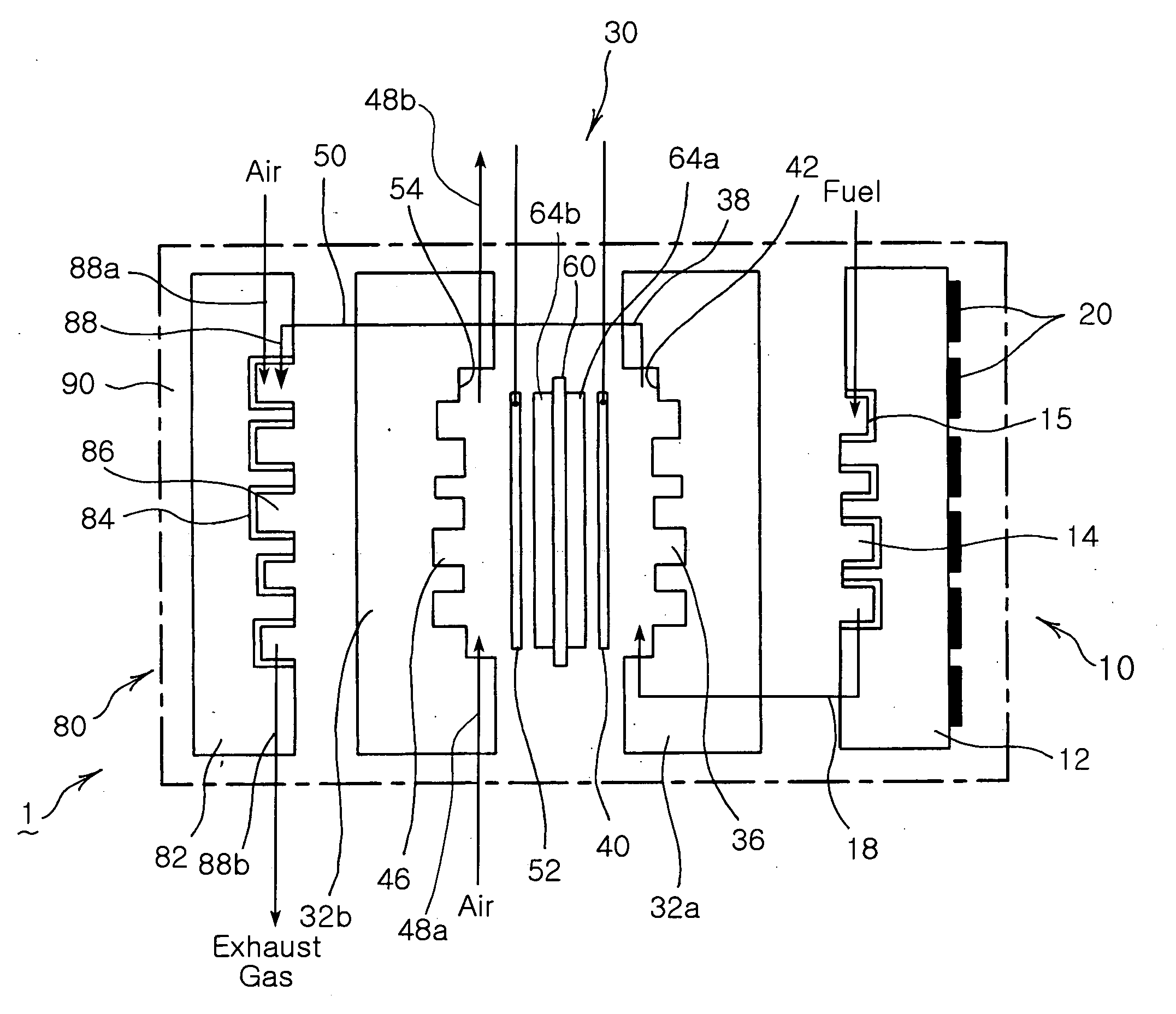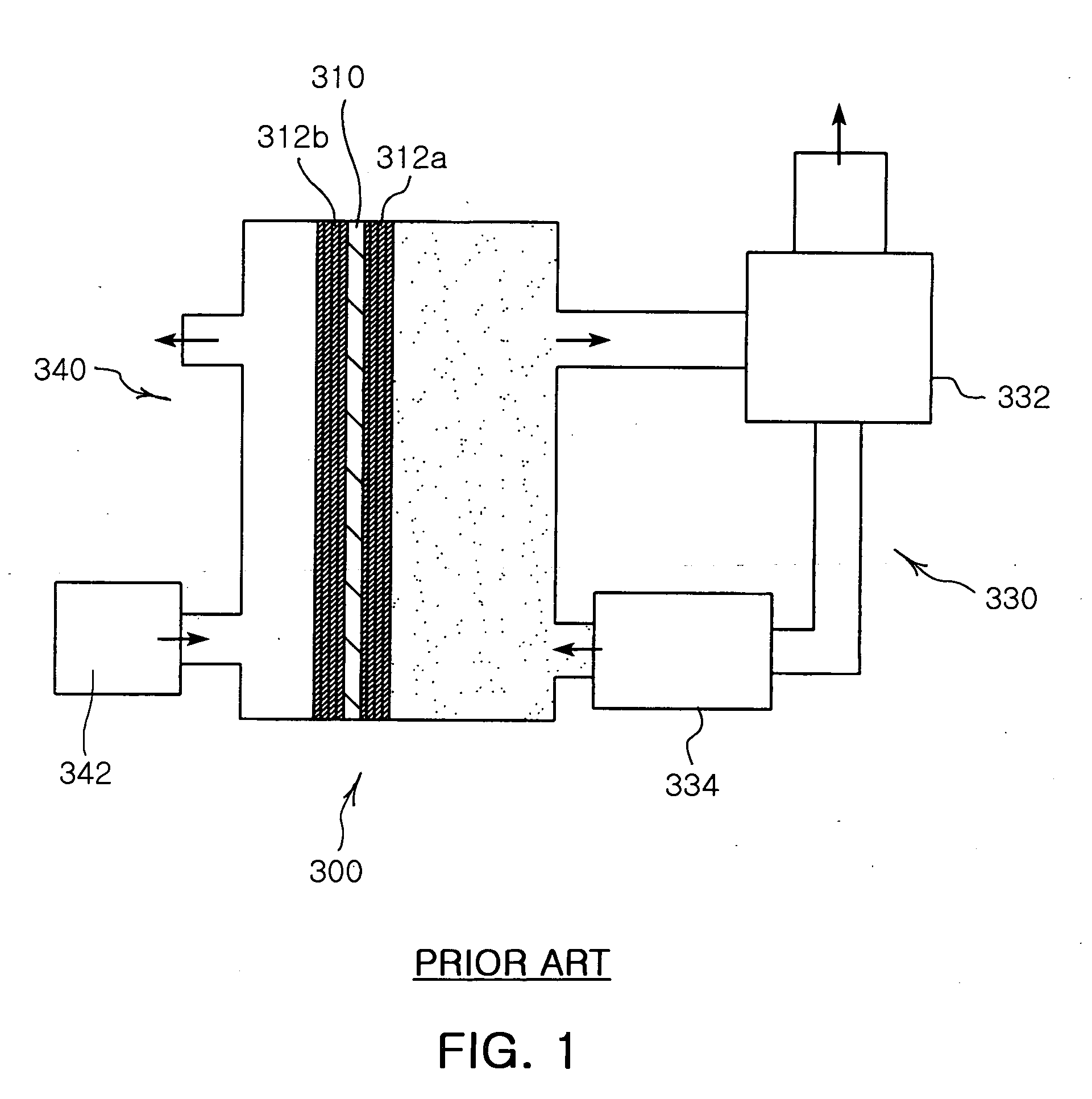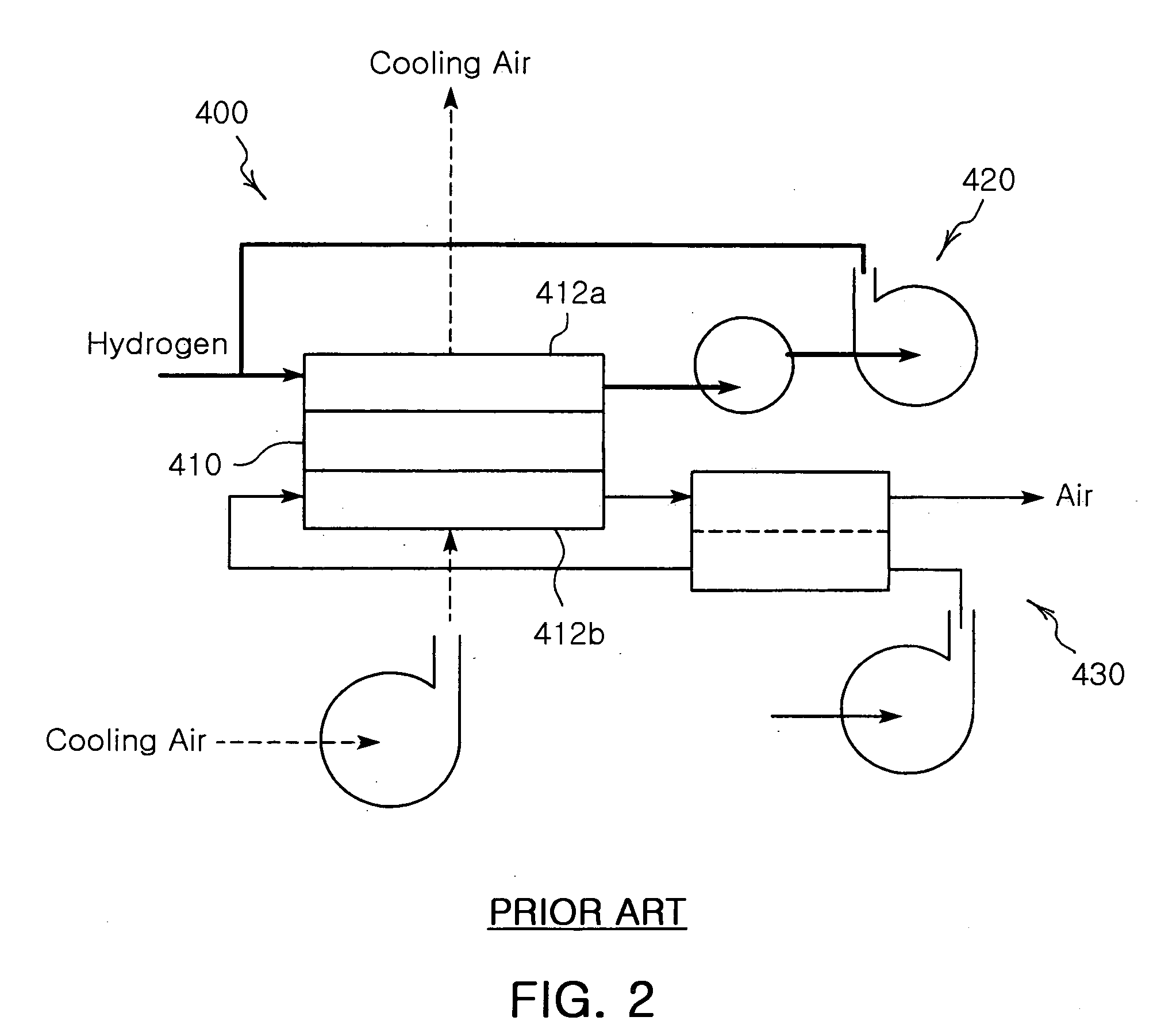Multi-layered thin film hydrogen fuel cell system
a fuel cell and multi-layer technology, applied in the direction of cell components, final product manufacturing, sustainable manufacturing/processing, etc., can solve the problems of high power consumption, difficult to manufacture the reformer first of all, and inability to miniaturize the entire system to the degree usable in a mobile phone, etc., to achieve high-efficiency electricity and facilitate mass production
- Summary
- Abstract
- Description
- Claims
- Application Information
AI Technical Summary
Benefits of technology
Problems solved by technology
Method used
Image
Examples
first embodiment
[0082] Thus, in the multi-layered thin film hydrogen fuel cell system 1 with the above described configuration according to the invention, when methanol (CH3OH) and water (H2O) of hydrocarbon compound fuel is supplied through the fuel inlet 16 of the reformer 10 and heated at a reaction temperature ranging from 150° C. to 250° C., a reformation process accompanying heat absorption reaction takes place and thereby hydrogen gas and the small amount of, preferably, less than 2% of CO, water and CO2 is emitted from the reformed gas outlet 18.
[0083] While the reformed gas migrates upward through the reformed gas inlet 34 of the second substrate 32a of the cell 30, it contacts the catalyst layer 64a of the MEA. During this process, hydrogen gas is disintegrated into hydrogen ions (H+) and electrons (e−), of which only the hydrogen ions pass through the MEA 60, and the electrons (e−) migrate through the second current collector 40. Due to the flow of the electrons (e−) at this time, curren...
second embodiment
[0090] FIGS. 12 to 14 illustrate a multi-layered thin film hydrogen fuel cell system according to the invention.
[0091] The multi-layered thin film hydrogen fuel cell 100 according to the second embodiment of the invention includes a reformer having a substrate 112 with a flow path formed on a side thereof and a catalyst formed in the flow path, thereby reforming fuel into hydrogen.
[0092] The reformer 110 is a part for generating hydrogen from fuel, and generally adopts a catalyst 115 of CuO / ZnO / Al2O3 or Cu / ZnO / Al2O3 in the case of methanol steam reformation. The reforming reaction temperature is selected in a range of 150° C. to 250° C. considering the hydrogen conversion rate and CO generation density of 2% or less so that and an MEA is not affected.
[0093] The substrate 112 of the reformer 110 is made of Si. It has a structure similar to that shown in FIG. 7, having a recessed flow path 114 formed in zigzag in a side thereof. The recessed flow path 114 has a fuel inlet 116 formed...
PUM
| Property | Measurement | Unit |
|---|---|---|
| temperature | aaaaa | aaaaa |
| temperature | aaaaa | aaaaa |
| depth | aaaaa | aaaaa |
Abstract
Description
Claims
Application Information
 Login to View More
Login to View More - R&D
- Intellectual Property
- Life Sciences
- Materials
- Tech Scout
- Unparalleled Data Quality
- Higher Quality Content
- 60% Fewer Hallucinations
Browse by: Latest US Patents, China's latest patents, Technical Efficacy Thesaurus, Application Domain, Technology Topic, Popular Technical Reports.
© 2025 PatSnap. All rights reserved.Legal|Privacy policy|Modern Slavery Act Transparency Statement|Sitemap|About US| Contact US: help@patsnap.com



